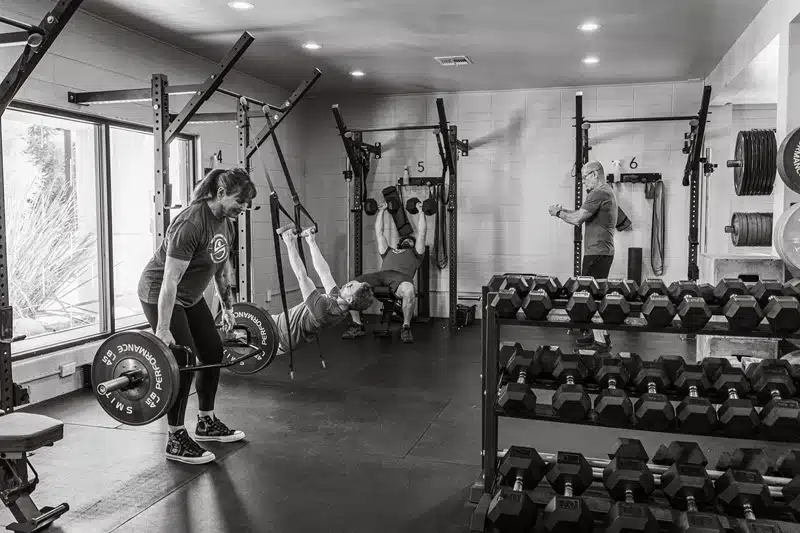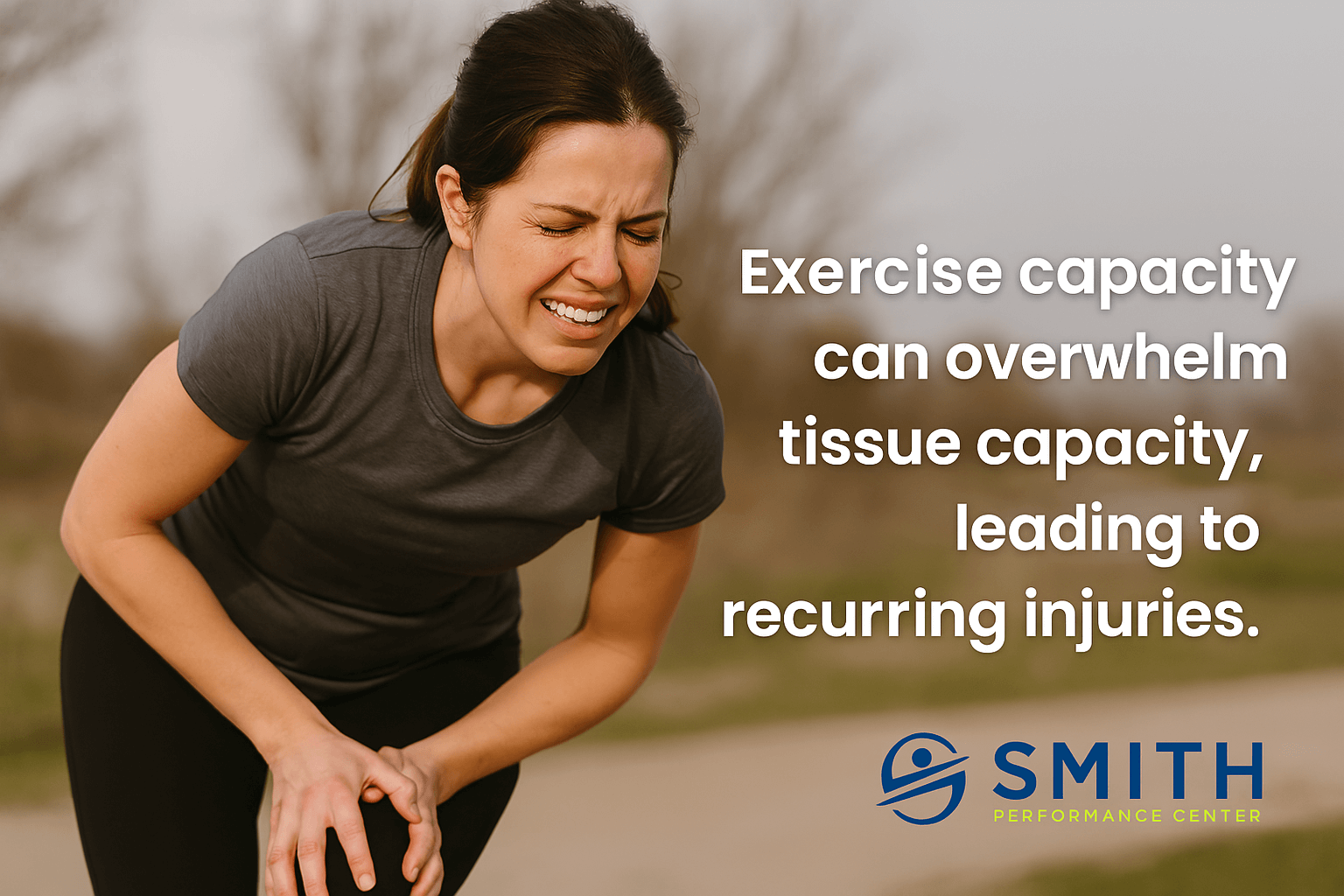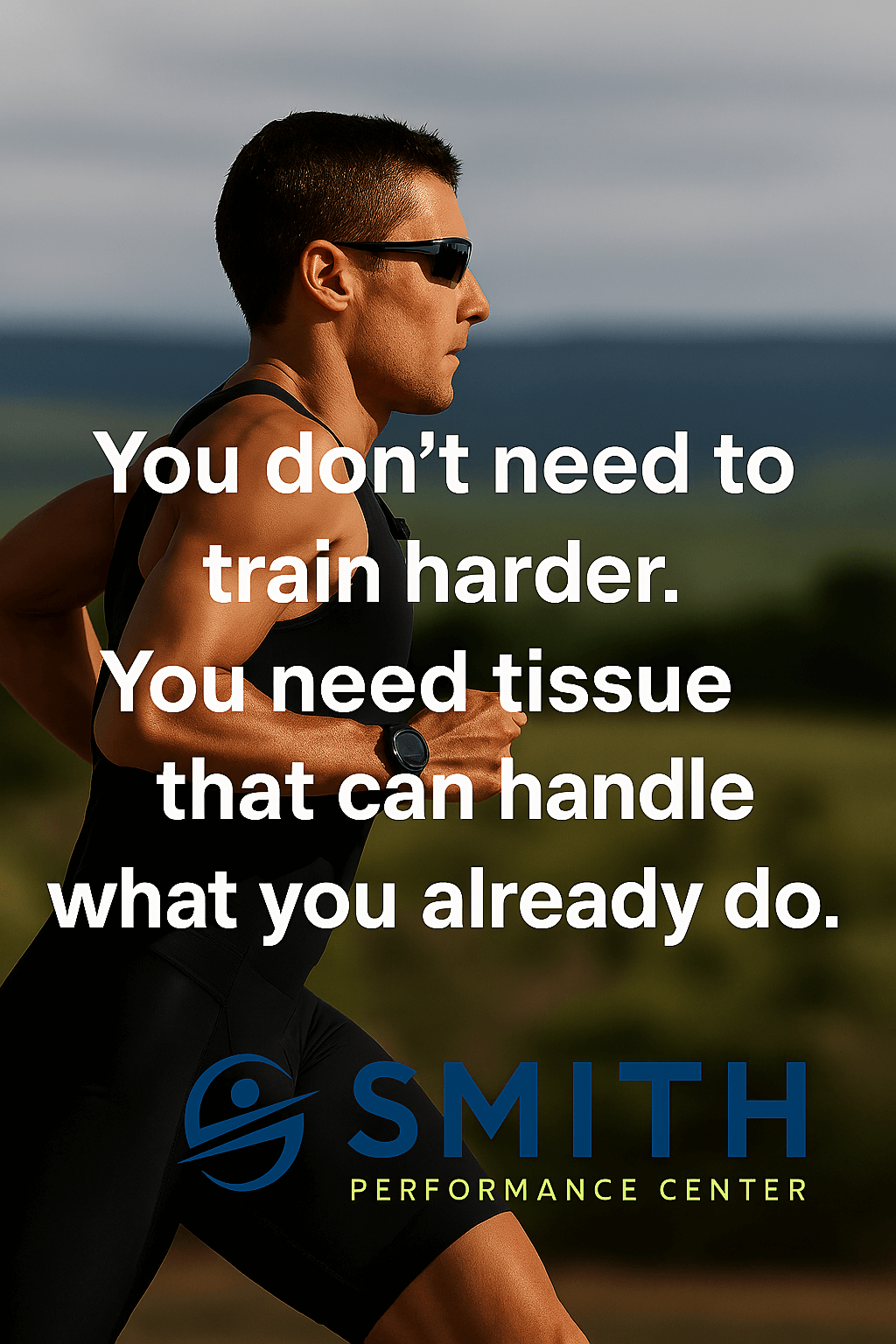
The Common Experience with Osteoporosis and Lifting: The Story
When Linda first came to Smith Performance Center, she wasn’t in pain, but she was frustrated. Her doctor had told her she had osteoporosis after a routine age-65 screening DEXA scan. Like many people searching for guidance on osteoporosis and lifting, she was unsure what was safe to do. She’d been told not to lift heavy weights because it could cause a fracture, yet also told she needed to lift to make her bones strong. Linda exercised, but lifting weight, especially heavy weights sounded dangerous.
She was warned to avoid jumping and running, but once again, had others saying you must jump. Every article she found focused on the dangers of hip fractures from falls, but few offered guidance on how to actually prevent them.
Like many people, Linda began to move less out of fear and that only accelerated her bone loss.
That’s a common story. According to estimates from the National Institutes of Health and the National Osteoporosis Foundation, about 10 million Americans have osteoporosis and another 44 million have low bone density, based on national survey data (Wright et al., J Bone Miner Res, 2014). It develops silently—often with no symptoms until a fracture happens—and most people don’t get screened until after age 65, long after bone loss has accelerated.
At her recent quarterly seminar for SPC members, physical therapist Carlee Uhrich broke down the misconceptions that keep people stuck.
The biggest myth? That fragile bones mean you should avoid load and impact.
In reality, appropriately loaded strength training and controlled jumping are two of the most effective ways to stimulate bone formation.
Carlee’s message to members was simple but powerful:
“What you’re already doing with training helps. The key is to do it safely, progressively, and consistently.”
For members already lifting at SPC, that means you’re likely doing more for your bone health than you realize. Each squat, deadlift, and press builds the foundation for stronger bones and better resilience later in life.
But if you’re not yet training with us—or you’ve been told to “be careful” and avoid heavy loading—there’s a clear path forward. The right starting point, proper screening, and progressive coaching can help you build bone safely. Whether you’re new to lifting, recovering from an injury, or just unsure where to start, our team designs programs that meet you where you are and guide you toward stronger movement and higher capacity.
In this conversation, Craig and Carlee unpack what osteoporosis really is, how screening works, and how SPC designs programs that build bone safely, even for people who are nervous to start.
Safe Strength and Impact Training for Osteoporosis
How did your osteoporosis presentation go, and what did you want people to take away?

Carlee: “It went well. The big idea is that what many members already do in training is helpful for bone health, and we can make it even better.”
She emphasized that consistent training already supports bone strength—and heavier loading or impact can safely enhance it.
“Lifting heavier has been shown to be safe in uninjured populations,” Carlee explained. “And adding jumping has a strong effect on the hip. People are curious but also a bit unsure about impact. Our job is to make it safe with screening and smart progressions.”
Jumping feels unsafe to many people. How do we make it safe?
Carlee acknowledged that concern.
“Impact can feel jarring at first,” she said. She explained that SPC starts with controlled movements—such as heel drops—and increases intensity only when screening shows the joints and spine are ready to handle the load.
“After you’ve activated your stabilizers, the landings aren’t nearly as provocative,” noting that warm-ups and good muscle activation reduce irritation risk.
She added that SPC’s role is to make those progressions safe through careful screening and coaching.
How does someone know they have osteoporosis?
“Osteoporosis is usually diagnosed with a DEXA scan,” Carlee said.
She clarified an important distinction:
“Pain doesn’t diagnose osteoporosis—it’s not the same as osteoarthritis.”
People sometimes assume pain means bone weakness, but that’s not accurate.
“A clinical diagnosis can also be made if you’ve had a fragility fracture—meaning a fracture from a simple fall,” she explained. “If we suspect weak bone from your history or fracture pattern, we’ll recommend a DEXA.”
Who is at greatest risk, and when should people be screened?
“Postmenopausal women are the highest-risk group,” Carlee said, “because estrogen levels drop quickly at menopause, which speeds bone loss.”
In men, hormone loss is slower and tends to appear later in life—often after age 70.
“People with long-term use of certain medications—like chemotherapy, chronic corticosteroids, some antidepressants or anticonvulsants—should also screen earlier. A family history raises suspicion too.”
If hormones are a major driver, does it make sense to screen earlier than standard age cutoffs?
Carlee believes it does.
“If your goal is prevention and you plan to use training and possibly medical options to protect bone, screening shortly before or at menopause is defensible,” she said. “Earlier data helps you act while bone is more modifiable.”
If a DEXA shows lumbar osteoporosis but the hip is fine, should training target areas differently?
“Yes,” she said.
“Jumping has the strongest effect on the hip. Lifting is most helpful for the lumbar spine. If the spine is osteopenic or osteoporotic, prioritize lifting—but you can still optimize the hip with impact work.”
The key, she emphasized, is matching the right exercise to the right bone region.
What if someone has a history of low back pain or a recurrent disc issue? Can they still train for bone health?
“Yes. We use a system of pre- and post-lift screens,” Carlee said.
“We look for changes in motion, strength, and symptom response. If a lift isn’t ready, we adjust the movement, range, or load and choose another pattern you can do safely.”
Even moderate loading helps:
“Moderate lifting still improves bone, even if it’s not as powerful as very heavy lifts. Progress may be slower, but it’s still progress.”
Is wearing a brace a problem for bone loading?
“No,” Carlee said.
“A brace doesn’t remove load from the skeleton—it’s not absorbing force,” she explained. “It actually lets your muscles work more efficiently.”
She added that studies have shown, “If you wear a brace and you’re sedentary, you can lose strength. But if you wear a brace and exercise, you’ll get stronger.”
Craig noted that bracing can also improve proprioception and awareness during lifts, something SPC screens for before and after heavier sessions.
What are you most concerned about with impact progressions, and how do we manage that risk?
“Joint irritation at the hip or knee is the main concern,” Carlee said.
“We watch for signs of irritation and adjust quickly. Volume is low at first—often fewer than 25 jumps. You control how hard you land.”
“If a landing feels bad or uncontrolled, we modify and rebuild.”
She also emphasized nutrition: “Low energy availability raises stress-fracture risk, so we make sure you’re fueling enough to support bone health.”
What would you say to someone who is nervous to start jumping or heavier lifting?
“You’ll be screened and coached,” Carlee said.
“We can start one-on-one or in a small group if you prefer. You’ll understand your own limits and know when to move forward or back off.”
She emphasized that SPC monitors your response with coaches present for every workout and weekly open clinics for new issues with the physical therapy team.
Carlee summed it up clearly:
“The research gives us really good principles, but it often excludes the real-world person who has a history of pain or injury. That’s where SPC comes in. We take those principles and make them usable.
We monitor, we modify, and we keep you moving. You can make meaningful changes in bone density by showing up two to three days a week and following a smart plan.”
Key Terms in Bone Health
DEXA scan: A low-radiation test that measures bone mineral density and helps diagnose osteoporosis. It’s often used to guide safe lifting and exercise progressions.
Fragility fracture: A bone break caused by a minor fall or low-impact event—often the first sign of undiagnosed osteoporosis.
Trabecular bone: The spongy, inner structure at the ends of long bones (like the hip and spine) that responds most to impact and strength training.
Ready to start?
Whether you’re already training at SPC or exploring strength training for osteoporosis, there’s a structured way to build bone safely and confidently.
Start with a free phone consultation to find your best starting point. We’ll review your current activity level, discuss any injuries or DEXA results, and help you begin a long-term plan for stronger bones and better movement.
Interested in a
Free Phone Consultation?
Tell us a bit about your situation, and one of our team members will reach out to schedule a time that works for you.



